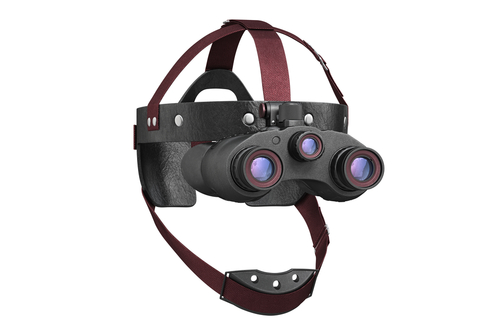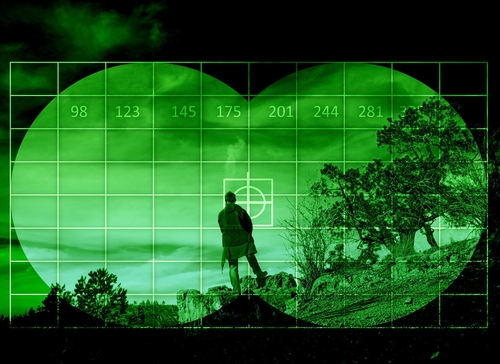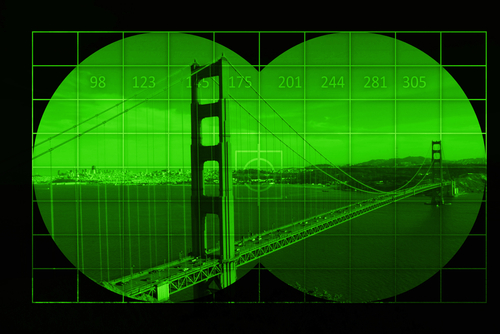The shades of green we see through night vision goggles are by design and intentional – for several reasons.
Night vision goggles manufacturers have tested several different colors in pursuit of perfecting night vision technology. They discovered that the various shades that form the monochromatic night vision pictures are best distinguishable by the human eyes when they are green.
Don’t be misled by night vision images popularized by pop culture as being a bit clunky and distorted. In truth, green is the ideal color for night vision device operators to produce the most accurate images possible.
In addition, the human eyes are most sensitive to wavelengths closer to about 555 nanometers, which is green. This allows for the display in night vision devices to appear dimmer, therefore conserving battery power. This feature is extremely useful when it comes to extended missions or operations.
The Origin of Night Vision
Night vision devices were originally military products. The first practical ones were crafted in Germany during the 1930s. The German infantry used them during the second world war. In turn, the military scientists from the United States developed night vision devices of their own that were used during the Korean War and the second world war.

This early version of night vision devices, popularly referred to as Generation 0, made use of active infrared to illuminate the surroundings.
Soldiers would bring with them an infrared illuminator to discharge a ray of near-infrared light. This near-infrared light bounced off objects and back to the night vision lenses, creating visible pictures.
In the following decades, advancements in technology have contributed to adding more functions and features to night vision devices. Today, there are Generation 1, Generation 2, and Generation 3 night vision devices available to use with certain restrictions and guidelines.
Today, law enforcement and military forces are using upgraded versions of night vision generations to help in security and tactical operations. There are still new improvements being developed in night vision tech, but the image intensification feature is the most popular function of the current generation of night vision.
What’s with the Green?
To have a basic understanding of how green images are created in night vision, let us first learn a little bit about the basic night vision technologies involved. These technologies are utilized in goggles, scopes, and night vision cameras. These are vital to how the green pictures are made.
Thermal Imaging

Thermal imaging is a technology that finds heat signatures of objects and the surroundings.
This means that thermal imaging is capable of revealing targets that emit temperatures it needs to detect against the rest of the objects around it.
Active Illumination
Active illumination is a straightforward function of night vision goggles. The image intensification features of night vision ma require additional light sources to process and generate images for us to see.
The active illumination used is closer to the infrared band. By brightening up the surroundings, night vision goggles set up better visibility and conditions for the operators.
Image Intensification
Image intensification is the technology heavily involved in producing green images when using night vision devices. The technology used on the device absorbs the light given off by heavenly bodies and amplifies it. This is the reason why night vision operators get an enhanced image of their surroundings.
Even if you think you are surrounded by complete darkness, that’s not actually true. Being in total darkness is an extremely rare occurrence. There is still going to be some sort of light source – whether it’s from celestial bodies, very distant light, or heat signatures. And night vision technologies can take advantage of these light outputs to create images for you.
